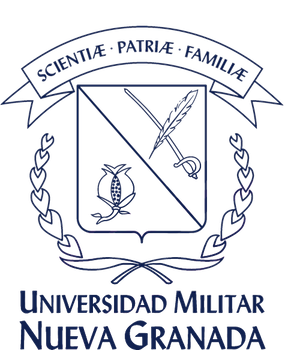Estratégias de autodefesa contra ciberataques de atores nãoestatais
Resumo
Este artigo tem como objetivo analisar e fornecer uma conceitualização vanguardista da noção de autodefesa no âmbito do direito internacional e cibernético. Na primeira seção, o documento explora os conceitos de autodefesa, ataque e uso da força no direito internacional, seguido de sua aplicação no ciberespaço. A próxima seção aplica especificamente o conceito de autodefesa em caso de um ciberataque perpetrado por atores não estatais. A conclusão destaca que o contexto do âmbito cibernético introduz a possibilidade de que as agressões de atores não-estatais possam ter consequências ainda mais graves do que os ataques cinéticos tradicionais. Este artigo serve como base para futuras discussões no setor de defesa e direito internacional.
Downloads
Referências
Alston, P. (2005). The "Not-a-Cat" Syndrome: Can the International Human Rights Regime Accommodate Non-State Actors? In Philip Alston (Eds.), Non-State Actors and Human Rights (p. 14). Oxford University Press.
Andress, J., & Winterfeld, S. (2011) Non-State Actors in Computer Network Operations. In Cyber Warfare Techniques, Tactics and Tools for Security Practitioners Syngress (pp. 193-206), (p. 196), (p.197), (p. 201), (pp. 198-199). https://doi.org/10.1016/B978-1-59749-637-7.00011-3
Akande, D., & Liefländer, T. (2013). Clarifying Necessity, Imminence, and Proportionality in The Law of Self-Defense. In American Journal of International law (Vol. 107-3) (p. 563). https://doi.org/10.5305/amerjintelaw.107.3.0563
Byers, M., (2003). Preemptive Self-defense: Hegemony, Equality and Strategies of Legal Change. In Journal of Political Philosophy (Vol.11-2) (p.181).https://doi.org/10.1111/1467-9760.00173
Carr, J., (2012). Responding to International Cyber Attacks as Acts of War. In Inside Cyber Warfare (p. 49) O'Reilly Media.
Dinstein, Y., (2002). Computer Network Attacks and Self-defense. In International law Studies (Vol 76) (p. 110). US Naval War College.
Dinstein, Y., (2011). Controversial consequences of the change in the legal status of war. In War, Aggression and Self-Defence. (pp. 181-182). Cambridge University Press. https://doi.org/10.1017/CBO9780511920622
Dinstein, Y., (2011). The Concept of Self-Defence. In War, Aggression and Self-Defence. (p. 203) (p. 204) (p. 205). Cambridge University Press.https://doi.org/10.1017/CBO9780511920622
Finlay, L., & Payne, C., (2019). The Attribution Problem and Cyber Armed Attacks." In American Journal of International Law Unbound (Vol. 113) (pp. 202-206). Cambridge University Press.
https://doi.org/10.1017/aju.2019.35
Gray, C., (2018). The Use of Force and the International Legal Order. In International law (pp. 601-635). Oxford University Press. https://doi.org/10.1093/he/9780198791836.003.0020
International Committee of the Red Cross (ICRC), Protocol Additional to the Geneva Conventions of 12 August 1949, and relating to the Protection of Victims of Non-International Armed Conflicts (Protocol II), 8 June 1977, 1125, UNTS 609
Legality of the Use by a State of nuclear weapons in Armed Conflict, Advisory Opinion, ICJ. Reports (1996) (p. 39)
Mayer, L., (2018) Defining cyberterrorism. In Revista Chilena de derecho y tecnología (Vol.7-2) (p.6) Centro de Estudios en Derecho Informático de la Facultad de Derecho de la Universidad de Chile. https://doi.org/10.5354/0719-2584.2018.51028
Military and Paramilitary Activities in and Against Nicaragua (Nicaragua v United States), Merits, (1986) ICJ Rep1986 (p.14) (p. 195) (p. 191) (p.194) (p. 115) (pp. 194 -195)
Non-State Actors in International law, Final Report of the ILA Committee on Non-State Actors (2016) (pp. 4-6)
Oil Platforms (Islamic Republic of Iran v. United States of America), Mertis, (2003) ICJ Rep. 2003. (p. 161 para.1) (p. 161 paras 51,64)
Oorspronga, F., Ducheineband, P., & Pijpers, P. (2023) Cyber-attacks and the right of self-defense: a case study of the Netherlands. In Policy Design and Practice (Vol.6-2023) (p.2 20). Taylor & Francis.https://doi.org/10.1080/25741292.2023.2179955
Pangrazzi, S. (2021) Self-Defence against Cyberattacks? Digital and Kinetic Defence in Light of Article 51 UN-Charter (Policy Brief). ICT for Peace Foundation (pp. 18-19) https://ict4peace.org/publications/self-defence-against-cyberattacks-digital-and-kinetic-defence-in-light-of-article-51-un-charter/
Proulx, V. (2005). Babysitting Terrorists: Should States be Strictly Liable for Failing to Prevent Transborder Attacks? In Berkeley Journal of International law. (Vol.23-3) (p.615). Berkeley Law. https://doi.org/10.15779/Z38CK90
Roscini, M. (2014). Cyber Operations and the jus ad bellum. In Cyber Operations and the Use of Force in International law. (p. 43) (p. 91). Oxford Academic. https://doi.org/10.1093/acprof:oso/9780199655014.003.0002.
Schmitt, M. (2014). The Law of Cyber Warfare: Quo Vadis? In Stanford Law & Policy Review (Vol 25-2) (pp. 273-274). Stanford University. https://ssrn.com/abstract=2320755
Schmitt, M. (2017). Due Diligence. In Tallinn Manual 2.0 on the international law Applicable to Cyber Operations. (p. 48). Cambridge University Press.https://doi.org/10.1017/9781316822524
Schmitt, M. (2017). Jurisdiction. In Tallinn Manual 2.0 on the international law Applicable to Cyber Operations. (p. 54). Cambridge University Press.https://doi.org/10.1017/9781316822524
Schmitt, M. (2017). Law of international responsibility. In Tallinn Manual 2.0 on the international law Applicable to Cyber Operations. (p. 94). Cambridge University Press. https://doi.org/10.1017/9781316822524
Schmitt, M. (2017). The use of force. In Tallinn Manual 2.0 on the international law Applicable to Cyber Operations. (pp. 334-337) (pp. 330-333), (p. 339) (p. 345) (p. 348) (p. 351). Cambridge University Press.https://doi.org/10.1017/9781316822524
Schmitt, M. (2022). The Law of Cyber Conflict: Quo Vadis 2.0? In The Future Law of Armed Conflict. (p. 222). Oxford Academic. https://doi.org/10.1093/oso/9780197626054.003.0007
Sigholm, J. (2016). Non-State Actors in Cyberspace Operations. In Journal of Military Studies. Vol 4(1) (p. 11). The Finnish Society of Military Sciences.https://doi.org/10.1515/jms-2016-0184
United Nations. (2004). A more secure world: our shared responsibility: report of the High-level Panel on Threats, Challenges, and Change. (pp. 53-64) United Nations Dept. of Public Information.
White House. (2002). The national security strategy of the United States of America. https://history.defense.gov/Portals/70/Documents/nss/nss2002.pdf?ver=oyVN99aEnrAWijAc_O5eiQ%3d%3d

Copyright (c) 2023 Revista de Relaciones Internacionales, Estrategia y Seguridad

Este trabalho está licenciado sob uma licença Creative Commons Attribution-NonCommercial-NoDerivatives 4.0 International License.











